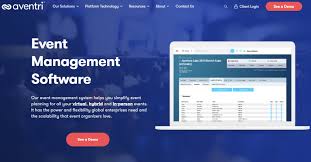Title: Exploring the Best Virtual Conference Platforms for Seamless Online Events
Introduction:
In today’s digital era, virtual conferences have become a popular alternative to in-person events. With the right virtual conference platform, businesses and organizations can host engaging and interactive online gatherings that connect people from around the world. In this article, we will explore some of the best virtual conference platforms available, highlighting their features and benefits.
Zoom:
Zoom has emerged as a leading virtual conference platform, offering a range of features tailored to meet the needs of various event sizes. With its user-friendly interface, Zoom allows for seamless video conferencing, screen sharing, chat functions, and breakout rooms for smaller group discussions. Its reliability and scalability make it a go-to choice for many organizations.
Microsoft Teams:
As part of the Microsoft Office 365 suite, Microsoft Teams provides an all-in-one solution for virtual conferences. It offers features such as video calls, chat messaging, file sharing, and collaborative document editing. With its integration with other Microsoft applications like Outlook and SharePoint, Teams streamlines communication and enhances productivity during online events.
Hopin:
Hopin is gaining popularity as an all-inclusive virtual conference platform that offers a variety of interactive features. It enables live streaming of presentations with customizable stages, networking opportunities through one-on-one video chats or group discussions in breakout rooms. Additionally, Hopin provides tools for exhibitors to showcase their products or services virtually.
Cisco Webex:
Webex by Cisco is known for its robust security measures and advanced collaboration capabilities. It supports large-scale events with up to thousands of attendees while maintaining high-quality audio and video streaming. Webex also offers features like screen sharing, real-time polling, whiteboarding tools, and post-event analytics to enhance engagement during virtual conferences.
Remo:
Remo stands out with its unique approach to creating a virtual conference experience that closely mimics an in-person event. Using a virtual floor plan, participants can move between different tables or “rooms,” engaging in face-to-face conversations via video chat. This platform fosters networking and provides an immersive experience, making it an excellent choice for smaller, more intimate gatherings.
Conclusion:
Virtual conferences have become an integral part of the modern business landscape, and choosing the right platform is crucial for hosting successful online events. Each of the platforms mentioned above offers distinct features and benefits that cater to various needs. Whether you prioritize ease of use, scalability, interactivity, or immersive experiences, there is a virtual conference platform out there to suit your requirements. Evaluate your specific needs and explore these platforms to find the one that best aligns with your event goals. With the right technology at your fingertips, you can create memorable and impactful virtual conferences that connect people across distances.
Frequently Asked Questions about the Best Virtual Conference Platforms
- What is the best virtual conference platform?
- What features should I look for in a virtual conference platform?
- How much does a virtual conference platform cost?
- What are the benefits of using a virtual conference platform?
- How secure is a virtual conference platform?
- How easy is it to use a virtual conference platform?
Determining the “best” virtual conference platform depends on various factors such as specific needs, budget, and desired features. However, some popular and highly regarded virtual conference platforms include:
- Zoom: Known for its reliability, ease of use, and scalability, Zoom offers a wide range of features for hosting virtual conferences of all sizes.
- Microsoft Teams: As part of the Microsoft Office 365 suite, Teams provides a comprehensive solution with features like video calls, chat messaging, file sharing, and collaborative document editing.
- Hopin: Hopin is gaining popularity for its interactive features such as customizable stages for presentations and networking opportunities through one-on-one video chats or breakout rooms.
- Cisco Webex: Webex stands out with its robust security measures and advanced collaboration capabilities, supporting large-scale events while maintaining high-quality audio and video streaming.
- Remo: Remo offers a unique virtual conference experience that simulates an in-person event with tables or “rooms” for face-to-face conversations via video chat, fostering networking and engagement.
It is advisable to evaluate your specific requirements and priorities before selecting the best virtual conference platform that aligns with your needs. Consider factors such as attendee capacity, interactivity options, ease of use, security measures, pricing structure, and customer support to make an informed decision.
When selecting a virtual conference platform, it’s essential to consider several key features that can enhance the overall experience for both organizers and attendees. Here are some important features to look for:
- Video Conferencing: High-quality video and audio capabilities are crucial for seamless communication during virtual conferences. Look for platforms that offer stable and reliable video conferencing, ensuring clear visuals and minimal disruptions.
- Screen Sharing: The ability to share screens is essential for presentations, demonstrations, and collaborative sessions. Ensure that the platform allows easy screen sharing options for both hosts and participants.
- Interactive Tools: Look for platforms that offer interactive features like chat functions, Q&A sessions, polling, and virtual whiteboards. These tools encourage engagement and participation from attendees, making the conference more dynamic.
- Breakout Rooms: Breakout rooms allow participants to have smaller group discussions or workshops within a larger event. This feature is valuable for networking or conducting focused sessions with specific subsets of attendees.
- Networking Opportunities: Virtual conferences should provide opportunities for attendees to connect with each other. Look for platforms that offer features like one-on-one video chats, virtual networking lounges, or matchmaking algorithms to facilitate meaningful interactions.
- Exhibitor Spaces: If you plan on having exhibitors showcase their products or services during the conference, ensure that the platform offers dedicated spaces where exhibitors can set up virtual booths or displays.
- Analytics and Reporting: Robust analytics tools can provide valuable insights into attendee engagement, session attendance rates, feedback surveys, and more. These metrics help measure the success of your event and identify areas for improvement.
- Security Measures: Data security is crucial when hosting virtual conferences. Look for platforms that prioritize encryption protocols, secure access controls, and privacy settings to protect sensitive information shared during the event.
- Integration Capabilities: Consider whether the platform integrates with other tools such as registration systems or CRM software to streamline event management and data collection processes.
- User-Friendly Interface: An intuitive and user-friendly platform is essential for both organizers and attendees. Ensure that the platform’s interface is easy to navigate, with clear instructions and minimal technical barriers.
By considering these features, you can select a virtual conference platform that aligns with your event goals and provides a seamless and engaging experience for all participants.
The cost of a virtual conference platform can vary depending on several factors, including the features and functionality you require, the number of attendees, and the duration of your event. Some platforms offer pricing tiers based on usage or the number of participants, while others may have flat rates or customized pricing plans.
Many virtual conference platforms offer both free and paid options. Free plans often have limitations on features, attendee numbers, or event duration. Paid plans typically provide more advanced features, increased participant capacity, and additional support.
It’s essential to research different virtual conference platforms to understand their pricing structures and compare them based on your specific needs. Some platforms may require you to request a quote or contact their sales team for detailed pricing information.
Additionally, keep in mind that there may be additional costs associated with add-ons or premium features such as branding customization, technical support, training sessions, or integration with other software systems.
Ultimately, it is recommended to reach out to the virtual conference platform providers directly to get accurate pricing details tailored to your event requirements.
Virtual conference platforms offer numerous benefits that make them an attractive choice for hosting online events. Here are some key advantages:
- Accessibility: Virtual conferences break down geographical barriers, allowing attendees from anywhere in the world to participate without the need for travel. This accessibility increases the potential audience and expands networking opportunities.
- Cost-effectiveness: Hosting a virtual conference eliminates expenses associated with venue rentals, catering, travel, and accommodation. It significantly reduces overall costs, making it a more budget-friendly option for businesses and organizations.
- Flexibility and convenience: Attendees can join virtual conferences from the comfort of their homes or offices, eliminating the need for extensive planning and time-consuming logistics. This flexibility allows participants to fit the event into their schedules more easily.
- Increased engagement: Virtual conference platforms offer various interactive features such as live chat, Q&A sessions, polls, and breakout rooms that enhance attendee engagement. These tools promote active participation and facilitate networking opportunities among participants.
- Data analytics: Virtual conference platforms often provide valuable data analytics tools that allow organizers to track attendee engagement levels, session popularity, and other metrics in real-time. This data can be used to improve future events and tailor content to better meet attendees’ needs.
- Sustainability: By eliminating the need for physical travel and reducing carbon emissions associated with large-scale events, virtual conferences contribute to a more sustainable approach to conferencing.
- Scalability: Virtual conference platforms can accommodate large numbers of attendees without logistical constraints or space limitations typically found in physical venues. This scalability allows organizations to reach broader audiences and maximize event impact.
- Content accessibility: Most virtual conference platforms offer on-demand access to recorded sessions and presentations even after the event concludes. Attendees can revisit or catch up on missed content at their convenience, providing long-term value.
- Global networking opportunities: Virtual conferences bring together professionals from various industries worldwide, fostering connections on a global scale that might not have been possible through traditional in-person events.
- Innovation and technology integration: Virtual conference platforms continuously evolve, incorporating new technologies such as virtual reality, augmented reality, and AI-powered networking tools. These innovations enhance the overall conference experience and keep attendees engaged.
In summary, virtual conference platforms offer accessibility, cost savings, flexibility, engagement features, data analytics, sustainability benefits, scalability, content accessibility, global networking opportunities, and technological advancements. These advantages make virtual conferences an increasingly popular choice for organizations looking to host impactful and successful online events.
Virtual conference platforms prioritize security to ensure the confidentiality, integrity, and privacy of participant data and interactions. However, the level of security can vary depending on the platform and its features. Here are some common security measures implemented by reputable virtual conference platforms:
- Encryption: Many platforms use end-to-end encryption to protect data transmitted during video calls or chat conversations. This ensures that only authorized participants can access the information exchanged.
- Secure Access: Platforms often require participants to authenticate their identities through secure login processes, such as passwords or two-factor authentication (2FA). This prevents unauthorized individuals from joining the conference.
- Meeting Controls: Virtual conference platforms offer various meeting controls that allow hosts to manage participant access and behavior. Features like password protection, waiting rooms, and attendee registration help prevent unauthorized entry and maintain control over who can join the event.
- Privacy Settings: Platforms typically provide privacy settings that allow hosts to control participant permissions, such as screen sharing, recording, or file transfer capabilities. These settings ensure that sensitive information is not shared without proper authorization.
- Security Audits and Compliance: Reputable virtual conference platforms undergo regular security audits to identify vulnerabilities and address them promptly. They also comply with industry standards and regulations like GDPR (General Data Protection Regulation) or HIPAA (Health Insurance Portability and Accountability Act) where applicable.
- Anti-hacking Measures: Platforms employ measures to prevent hacking attempts or unauthorized access to user accounts or meeting rooms. This includes implementing firewalls, intrusion detection systems, and monitoring for suspicious activities.
While virtual conference platforms strive to provide robust security measures, it’s essential for users to also take precautions on their end:
– Use strong passwords for your accounts.
– Keep your software up-to-date with the latest security patches.
– Avoid sharing sensitive information in public chat rooms.
– Be cautious of phishing attempts or suspicious links shared during conferences.
– Educate participants about best practices for online security.
By combining the security measures provided by the platform and user vigilance, virtual conference platforms can offer a secure environment for hosting online events.
Virtual conference platforms vary in terms of ease of use, but many of them strive to provide user-friendly interfaces and intuitive features. Here are a few factors that can contribute to the overall ease of use:
- User Interface: A well-designed and intuitive user interface can greatly enhance the user experience. Look for platforms with clear navigation menus, easy-to-understand icons, and straightforward controls.
- Setup Process: The setup process should be streamlined and straightforward. Platforms that offer step-by-step guidance or tutorials can help users quickly get acquainted with the platform’s features and functionalities.
- Accessibility: A good virtual conference platform should be accessible across different devices and operating systems, such as desktops, laptops, tablets, and smartphones. This allows participants to join conferences from their preferred devices without any compatibility issues.
- Technical Support: Reliable technical support is essential for a smooth experience. Look for platforms that provide readily available customer support channels like live chat, email, or phone support to address any issues or questions that may arise.
- Training Resources: Some virtual conference platforms offer training resources such as video tutorials, documentation, or webinars to help users understand the platform’s capabilities and maximize its potential.
- Integration: Platforms that seamlessly integrate with other tools like calendars (e.g., Outlook or Google Calendar) or collaboration software (e.g., Slack or Microsoft Teams) can make it easier to schedule events and collaborate with team members.
It’s important to note that while many virtual conference platforms strive for simplicity, there may still be a learning curve involved when using new technology. Familiarizing yourself with the platform’s features through training resources and practice sessions can help you become more comfortable using it.
Ultimately, the ease of use will depend on your familiarity with technology and your specific requirements for hosting virtual conferences. It is recommended to explore different platforms beforehand and choose one that aligns with your comfort level and technical expertise.










